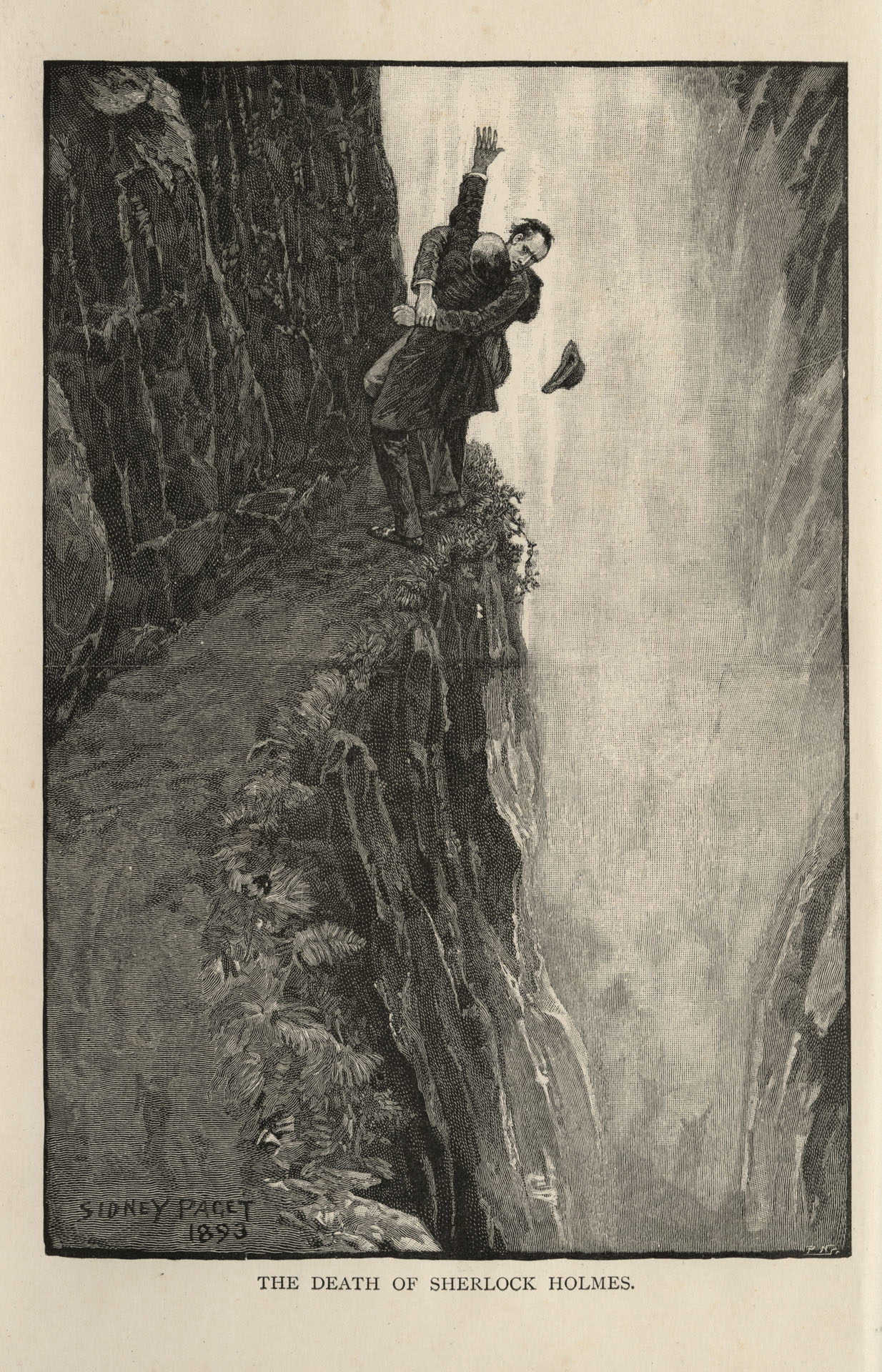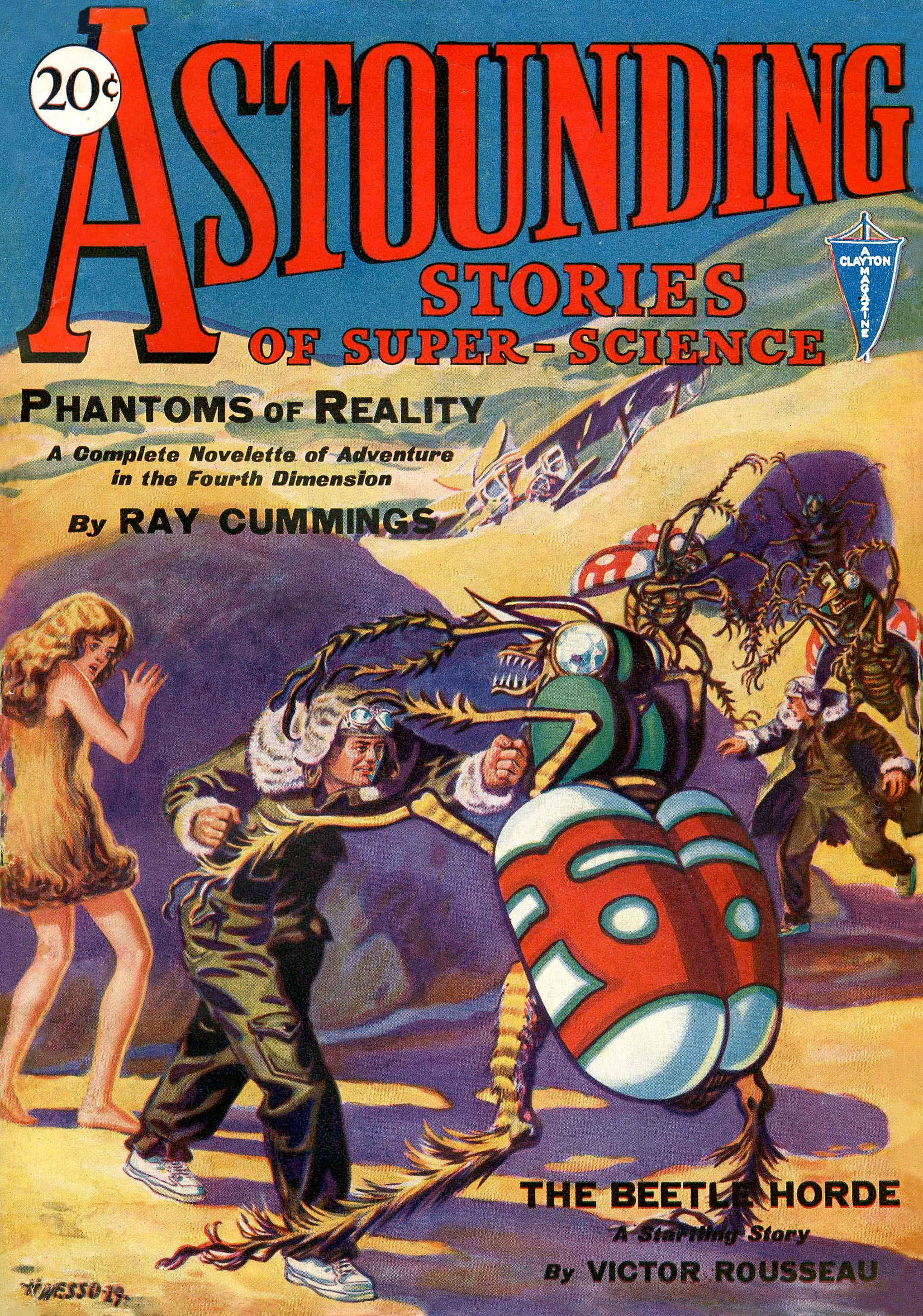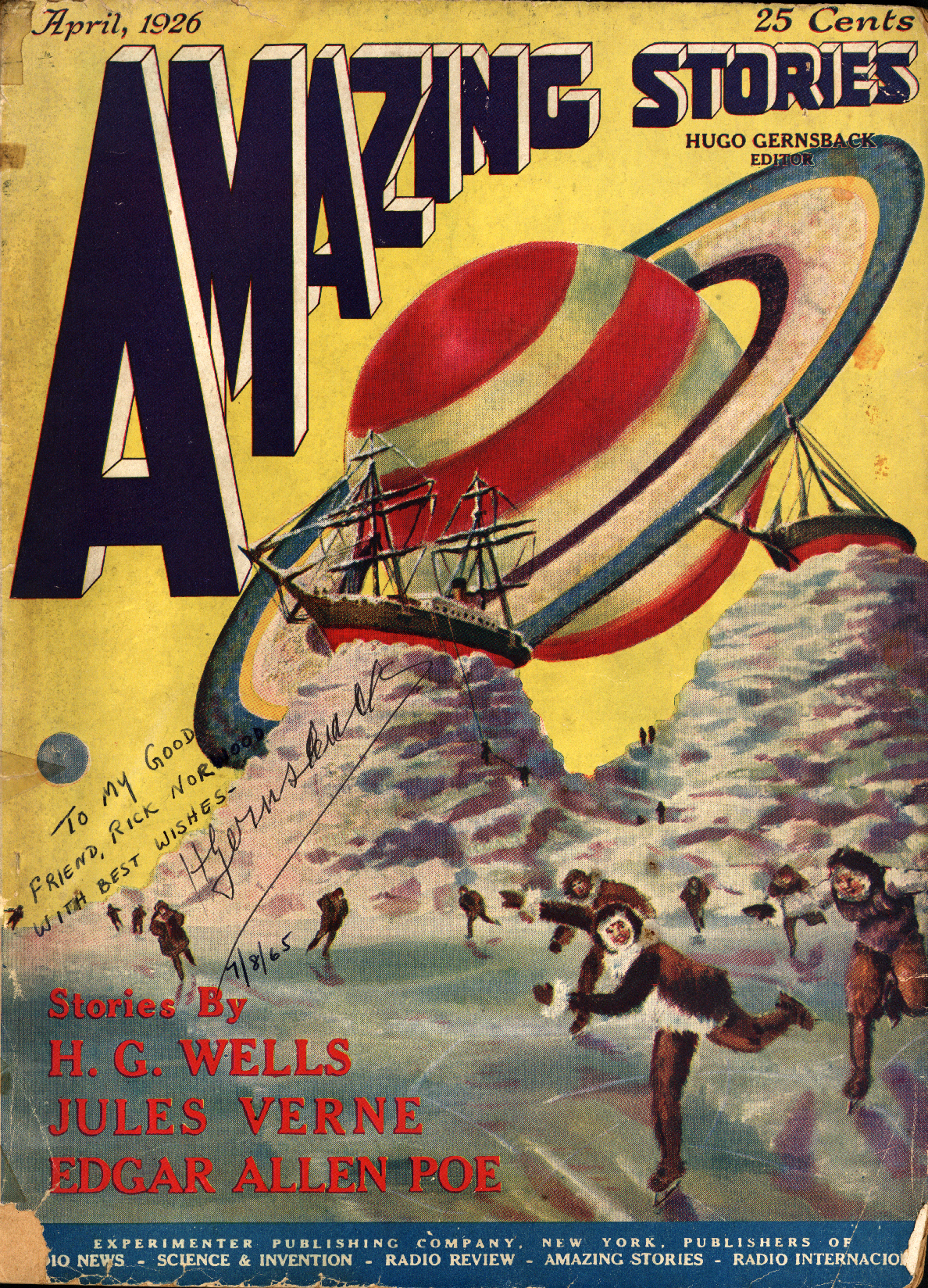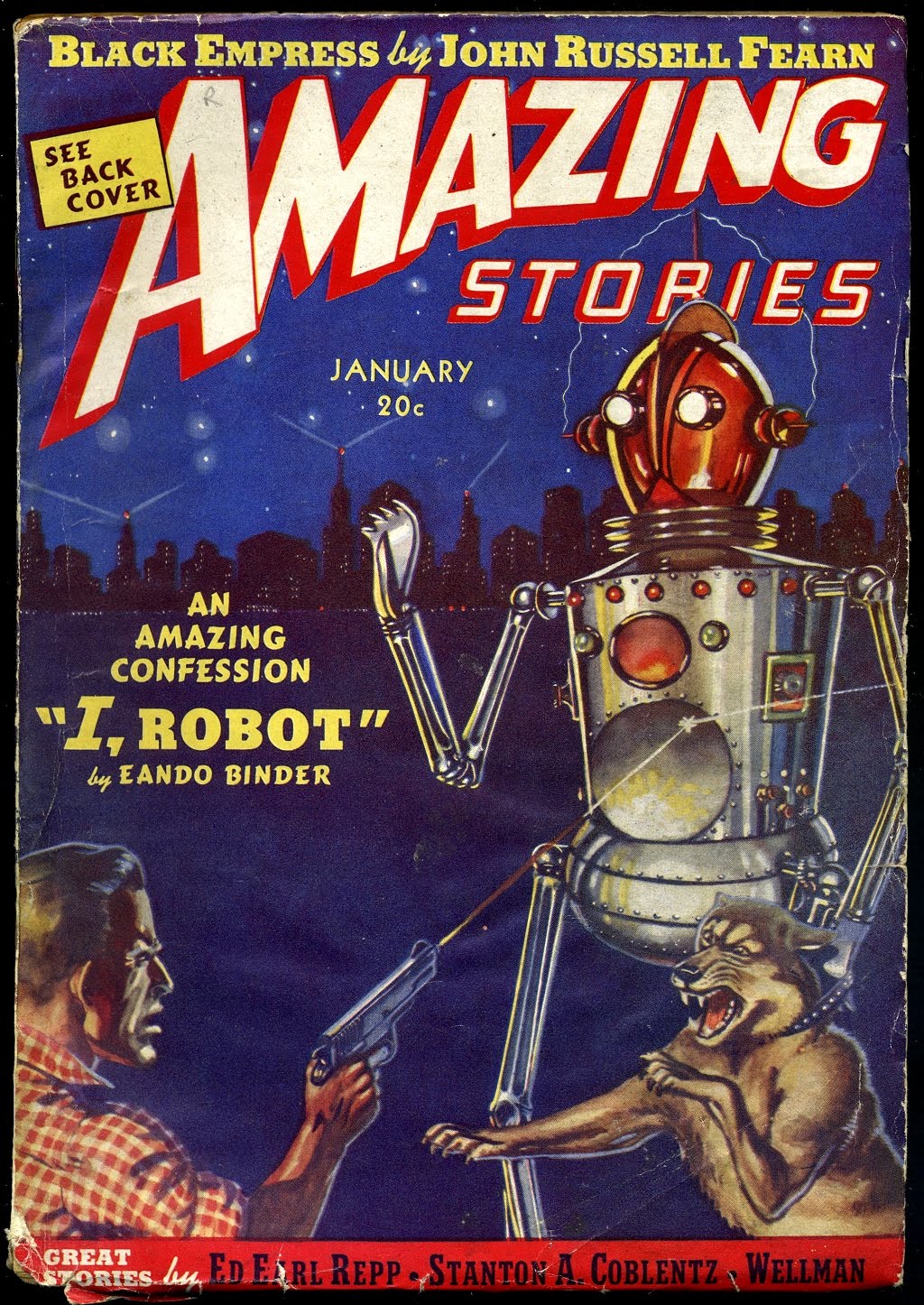|
Robbie (short Story)
"Robbie" is a science fiction short story by American writer Isaac Asimov. It was his first robot story and writing commenced on June 10, 1939. It was first published in the September 1940 issue ''Super Science Stories'' magazine as "Strange Playfellow", a title that was chosen by editor Frederik Pohl and described as "distasteful" by Asimov. A revised version of "Robbie" was reprinted under Asimov's original title in the collections ''I, Robot'' (1950), ''The Complete Robot'' (1982), and ''Robot Visions'' (1990). "Robbie" was the fourteenth story written by Asimov, and the ninth to be published. The story is also part of Asimov's ''Robot'' series, and was the first of Asimov's positronic robot stories to see publication. The story centers on the technophobia that surrounds robots, and how it is misplaced. Almost all previously published science fiction stories featuring robots followed the theme 'robot turns against creator'; Asimov has consistently held the belief that the Fra ... [...More Info...] [...Related Items...] OR: [Wikipedia] [Google] [Baidu] |
Isaac Asimov
yi, יצחק אזימאװ , birth_date = , birth_place = Petrovichi, Russian SFSR , spouse = , relatives = , children = 2 , death_date = , death_place = Manhattan, New York City, U.S. , nationality = Russian (1920–1922)Soviet (1922–1928)American (1928–1992) , occupation = Writer, professor of biochemistry , years_active = 1939–1992 , genre = Science fiction (hard SF, social SF), mystery, popular science , subject = Popular science, science textbooks, essays, history, literary criticism , education = Columbia University ( BA, MA, PhD) , movement = Golden Age of Science Fiction , module = , signature = Isaac Asimov signature.svg Isaac Asimov ( ; 1920 – April 6, 1992) was an American writer and professor of biochemistry at Boston University. During his lifetime, Asimov was considered one of the "Big Three" science fiction writers, along with Robert A. Heinlein and Arthur C. Clarke. A prolific writer, he wrote or edited more than 500 books ... [...More Info...] [...Related Items...] OR: [Wikipedia] [Google] [Baidu] |
Robot
A robot is a machine—especially one programmable by a computer—capable of carrying out a complex series of actions automatically. A robot can be guided by an external control device, or the control may be embedded within. Robots may be constructed to evoke human form, but most robots are task-performing machines, designed with an emphasis on stark functionality, rather than expressive aesthetics. Robots can be autonomous or semi-autonomous and range from humanoids such as Honda's ''Advanced Step in Innovative Mobility'' ( ASIMO) and TOSY's ''TOSY Ping Pong Playing Robot'' (TOPIO) to industrial robots, medical operating robots, patient assist robots, dog therapy robots, collectively programmed ''swarm'' robots, UAV drones such as General Atomics MQ-1 Predator, and even microscopic nano robots. By mimicking a lifelike appearance or automating movements, a robot may convey a sense of intelligence or thought of its own. Autonomous things are expected to proliferate in ... [...More Info...] [...Related Items...] OR: [Wikipedia] [Google] [Baidu] |
Laws Of Robotics
The Three Laws of Robotics (often shortened to The Three Laws or known as Asimov's Laws) are a set of rules devised by science fiction author Isaac Asimov. The rules were introduced in his 1942 short story " Runaround" (included in the 1950 collection ''I, Robot''), although they had been foreshadowed in some earlier stories. The Three Laws, quoted from the "Handbook of Robotics, 56th Edition, 2058 A.D.", are: ;First Law :A robot may not injure a human being or, through inaction, allow a human being to come to harm. ;Second Law :A robot must obey the orders by human beings except where such orders would conflict with the First Law. ;Third Law :A robot must protect its own existence as long as such protection does not conflict with the First or Second Law. These form an organizing principle and unifying theme for Asimov's robotic-based fiction, appearing in his ''Robot'' series, the stories linked to it, and his ''Lucky Starr'' series of young-adult fiction. The Laws are incorp ... [...More Info...] [...Related Items...] OR: [Wikipedia] [Google] [Baidu] |
Ret-con
Retroactive continuity, or retcon for short, is a literary device in which established diegetic facts in the plot of a fictional work (those established through the narrative itself) are adjusted, ignored, supplemented, or contradicted by a subsequently published work which recontextualizes or breaks continuity with the former. There are various motivations for applying retroactive continuity, including: * To accommodate desired aspects of sequels or derivative works which would otherwise be ruled out. * To respond to negative fan reception of previous stories. * To correct and overcome errors or problems identified in the prior work since its publication. * To change or clarify how the prior work should be interpreted. * To match reality, when assumptions or projections of the future are later proven wrong. Retcons are used by authors to increase their creative freedom, on the assumption that the changes are unimportant to the audience compared to the new story which can be tol ... [...More Info...] [...Related Items...] OR: [Wikipedia] [Google] [Baidu] |
Susan Calvin
Dr. Susan Calvin is a fictional character appearing in Isaac Asimov's ''Robot'' series of science fiction short stories. According to I, Robot, Susan Calvin was born in the year 1982 and died at the age of 82, either in 2064 or 2065. She was the chief robopsychologist at US Robots and Mechanical Men, Inc., posited as the major manufacturer of robots in the 21st century. She was the main character in many of Asimov's short stories concerning robots, which were later collected in the books ''I, Robot'' and ''The Complete Robot''. Fictional character biography According to Asimov's fictional history of robotics, Susan Calvin was born in 1982, the same year that US Robots and Mechanical Men was incorporated. At 16, she wrote the first of many papers on robotics, a Physics-1 paper entitled "Practical Aspects of Robotics". This was after attending a Psycho-Math seminar at which Dr Alfred Lanning of US Robots demonstrated the first mobile robot to be equipped with a voice. As quoted ... [...More Info...] [...Related Items...] OR: [Wikipedia] [Google] [Baidu] |
Finmark Robot Corporation .
{{dab ...
Finmark may refer to: * Finmark, Ontario, a community in the Thunder Bay District of Ontario * the Sápmi (area) * a misspelling of Finnmark, a county in Norway. * a misspelling of Finland, a Nordic country The Nordic countries (also known as the Nordics or ''Norden''; lit. 'the North') are a geographical and cultural region in Northern Europe and the North Atlantic. It includes the sovereign states of Denmark, Finland, Iceland, Norway and Swed ... [...More Info...] [...Related Items...] OR: [Wikipedia] [Google] [Baidu] |
Astonishing Stories
''Astonishing Stories'' was an American pulp magazine, pulp science fiction magazine, published by Popular Publications between 1940 and 1943. It was founded under Popular's "Fictioneers" imprint, which paid lower rates than Popular's other magazines. The magazine's first editor was Frederik Pohl, who also edited a companion publication, ''Super Science Stories''. After nine issues Pohl was replaced by Alden H. Norton, who subsequently rehired Pohl as an assistant. The budget for ''Astonishing'' was very low, which made it difficult to acquire good fiction, but through his membership in the Futurians, a group of young science fiction fandom, science fiction fans and aspiring writers, Pohl was able to find material to fill the early issues. The magazine was successful, and Pohl was able to increase his pay rates slightly within a year. He managed to obtain stories by writers who subsequently became very well known, such as Isaac Asimov and Robert Heinlein. After Pohl entered th ... [...More Info...] [...Related Items...] OR: [Wikipedia] [Google] [Baidu] |
Literary Agent
A literary agent is an agent who represents writers and their written works to publishers, theatrical producers, film producers, and film studios, and assists in sale and deal negotiation. Literary agents most often represent novelists, screenwriters, and non-fiction writers. Reputable literary agents generally charge a commission and do not charge a fee upfront. The commission rate is generally 15%. Diversity Literary agencies can range in size from a single agent who represents perhaps a dozen authors, to a substantial firm with senior partners, sub-agents, specialists in areas like foreign rights or licensed merchandise tie-ins, and clients numbering in the hundreds. Most agencies, especially smaller ones, specialize to some degree. They may represent—for example—authors of science fiction, mainstream thrillers and mysteries, children's books, romance, or highly topical nonfiction. Very few agents represent short stories or poetry. Legitimate agents and agencies in the b ... [...More Info...] [...Related Items...] OR: [Wikipedia] [Google] [Baidu] |
Astounding Science Fiction
''Analog Science Fiction and Fact'' is an American science fiction magazine published under various titles since 1930. Originally titled ''Astounding Stories of Super-Science'', the first issue was dated January 1930, published by William Clayton, and edited by Harry Bates. Clayton went bankrupt in 1933 and the magazine was sold to Street & Smith. The new editor was F. Orlin Tremaine, who soon made ''Astounding'' the leading magazine in the nascent pulp science fiction field, publishing well-regarded stories such as Jack Williamson's '' Legion of Space'' and John W. Campbell's "Twilight". At the end of 1937, Campbell took over editorial duties under Tremaine's supervision, and the following year Tremaine was let go, giving Campbell more independence. Over the next few years Campbell published many stories that became classics in the field, including Isaac Asimov's ''Foundation'' series, A. E. van Vogt's ''Slan'', and several novels and stories by Robert A. Heinl ... [...More Info...] [...Related Items...] OR: [Wikipedia] [Google] [Baidu] |
John W
John is a common English name and surname: * John (given name) * John (surname) John may also refer to: New Testament Works * Gospel of John, a title often shortened to John * First Epistle of John, often shortened to 1 John * Second Epistle of John, often shortened to 2 John * Third Epistle of John, often shortened to 3 John People * John the Baptist (died c. AD 30), regarded as a prophet and the forerunner of Jesus Christ * John the Apostle (lived c. AD 30), one of the twelve apostles of Jesus * John the Evangelist, assigned author of the Fourth Gospel, once identified with the Apostle * John of Patmos, also known as John the Divine or John the Revelator, the author of the Book of Revelation, once identified with the Apostle * John the Presbyter, a figure either identified with or distinguished from the Apostle, the Evangelist and John of Patmos Other people with the given name Religious figures * John, father of Andrew the Apostle and Saint Peter * Pope Jo ... [...More Info...] [...Related Items...] OR: [Wikipedia] [Google] [Baidu] |
Amazing Stories
''Amazing Stories'' is an American science fiction magazine launched in April 1926 by Hugo Gernsback's Experimenter Publishing. It was the first magazine devoted solely to science fiction. Science fiction stories had made regular appearances in other magazines, including some published by Gernsback, but ''Amazing'' helped define and launch a new genre of pulp fiction. As of 2018, ''Amazing'' has been published, with some interruptions, for 92 years, going through a half-dozen owners and many editors as it struggled to be profitable. Gernsback was forced into bankruptcy and lost control of the magazine in 1929. In 1938 it was purchased by Ziff-Davis, who hired Raymond A. Palmer as editor. Palmer made the magazine successful though it was not regarded as a quality magazine within the science fiction community. In the late 1940s ''Amazing'' presented as fact stories about the Shaver Mystery, a lurid mythos that explained accidents and disaster as the work of robots named deros, w ... [...More Info...] [...Related Items...] OR: [Wikipedia] [Google] [Baidu] |
Otto Binder
Otto Oscar Binder (; August 26, 1911 – October 13, 1974) was an American author of science fiction and non-fiction books and stories, and comic books. He is best known as the co-creator of Supergirl and for his many scripts for '' Captain Marvel Adventures'' and other stories involving the entire superhero Marvel Family. He was prolific in the comic book field and is credited with writing over 4,400 stories across a variety of publishers under his own name, as well as more than 160 stories under the pen-name Eando Binder. Biography Early life and career Born in Bessemer, Michigan, Otto Binder was the youngest of six children born into a German-Lutheran family that had emigrated from Austria a year earlier. They settled in Chicago in 1922, during a period rich with science fiction, which enthralled Binder and his brother Earl. The two began writing in partnership and sold their first story, "The First Martian" to ''Amazing Stories'' in 1930; it saw publication in 1932 under ... [...More Info...] [...Related Items...] OR: [Wikipedia] [Google] [Baidu] |





